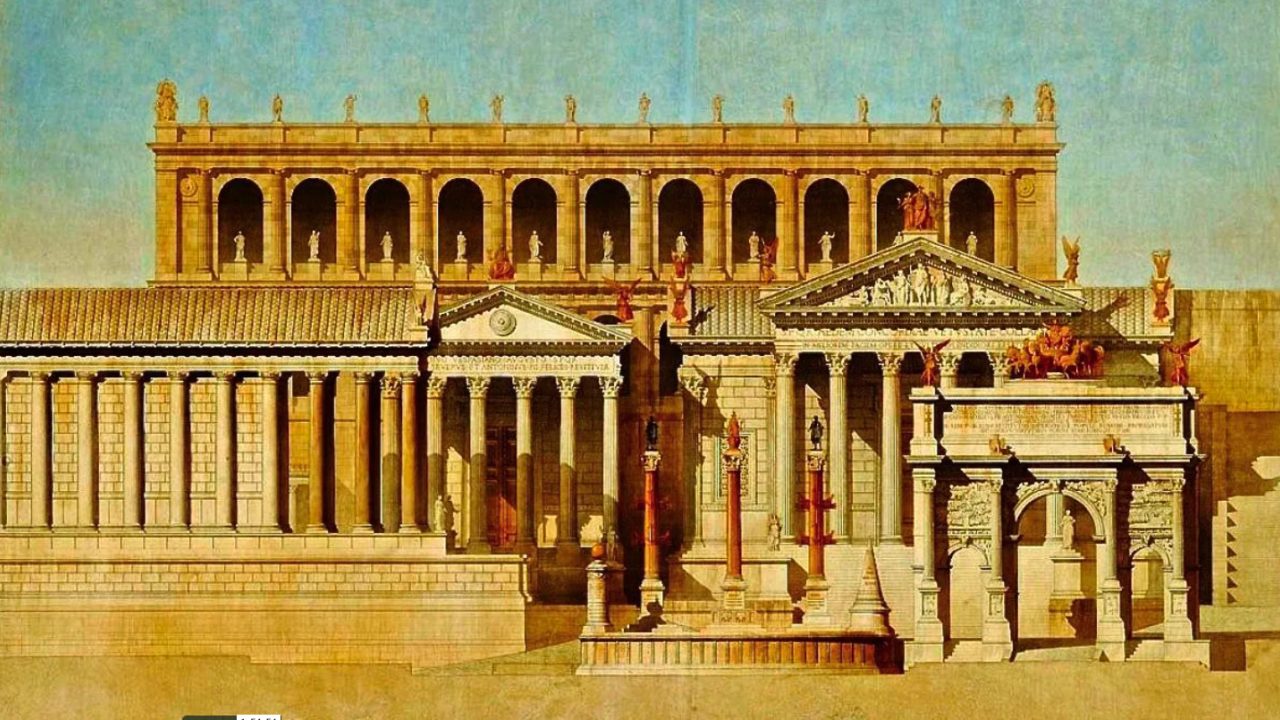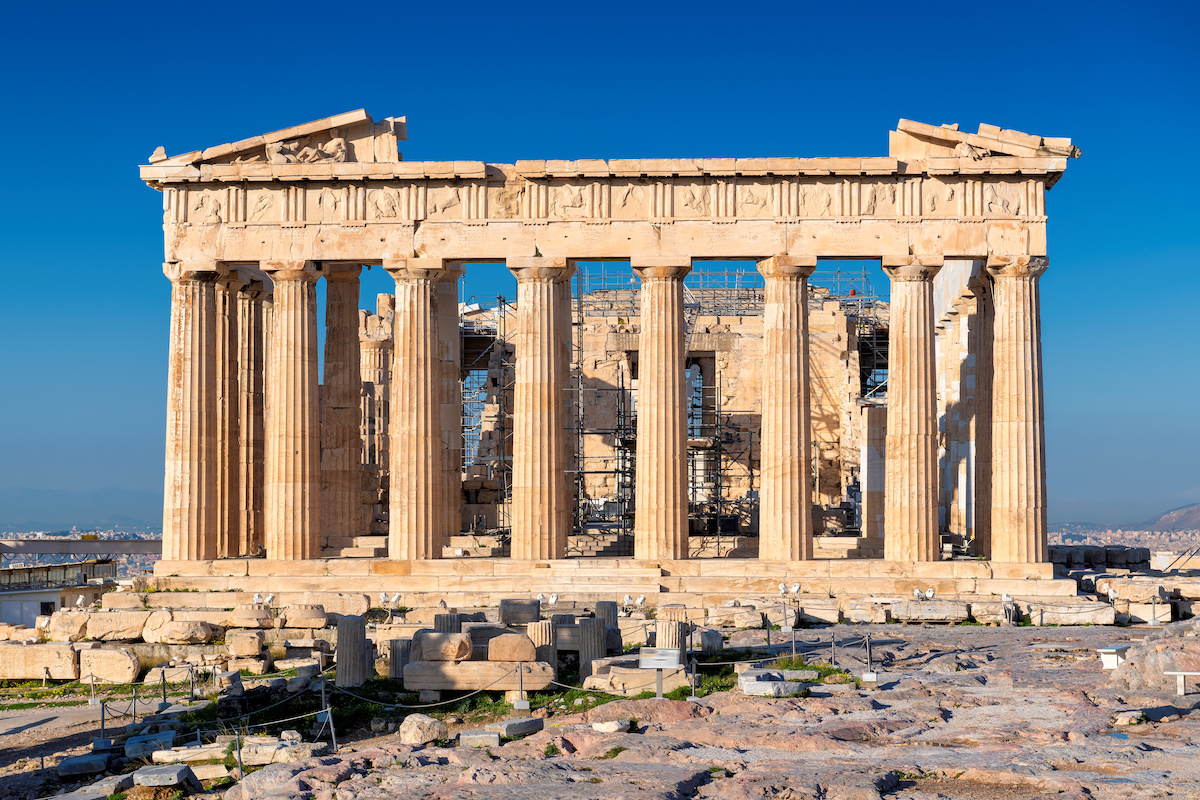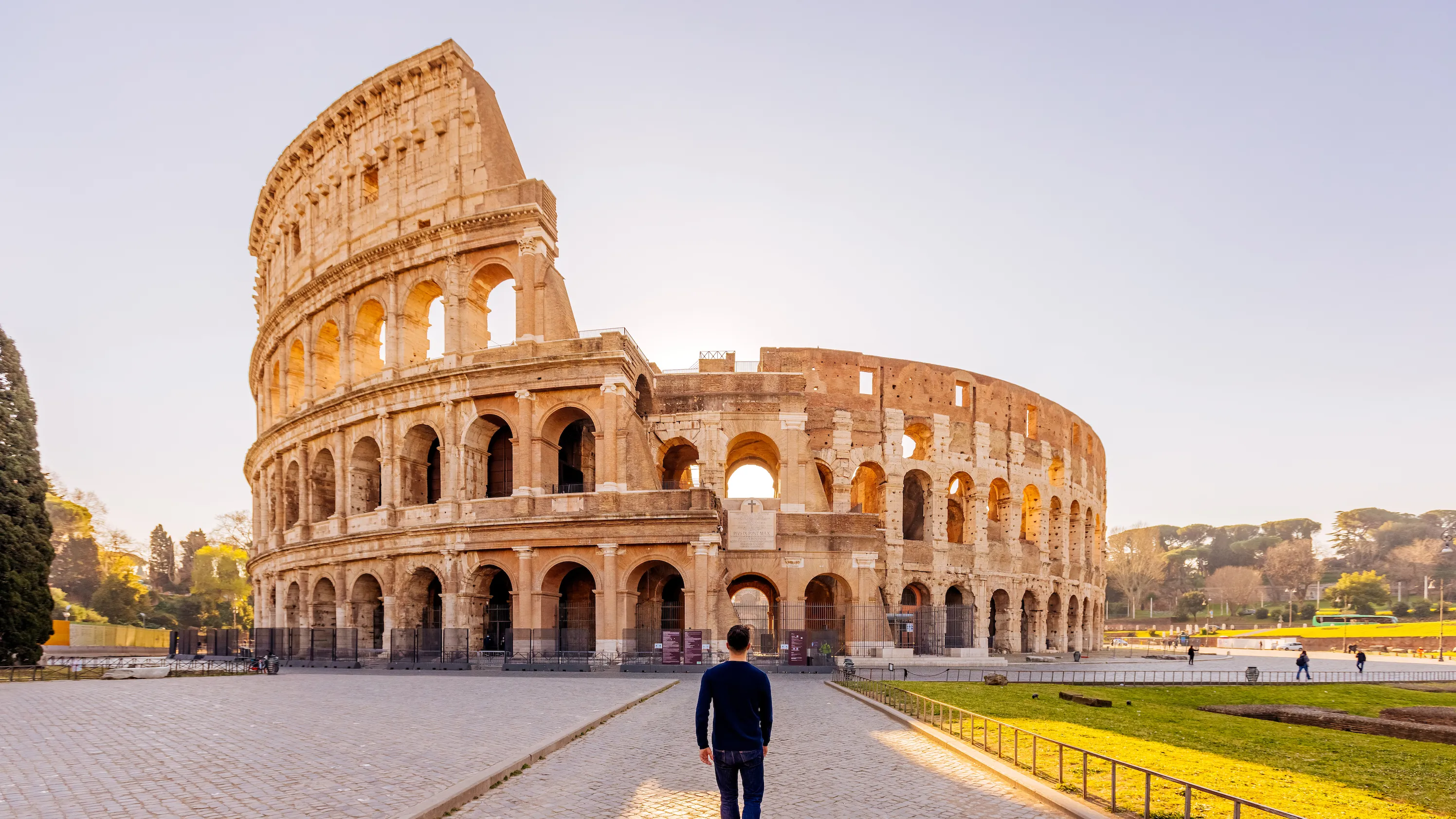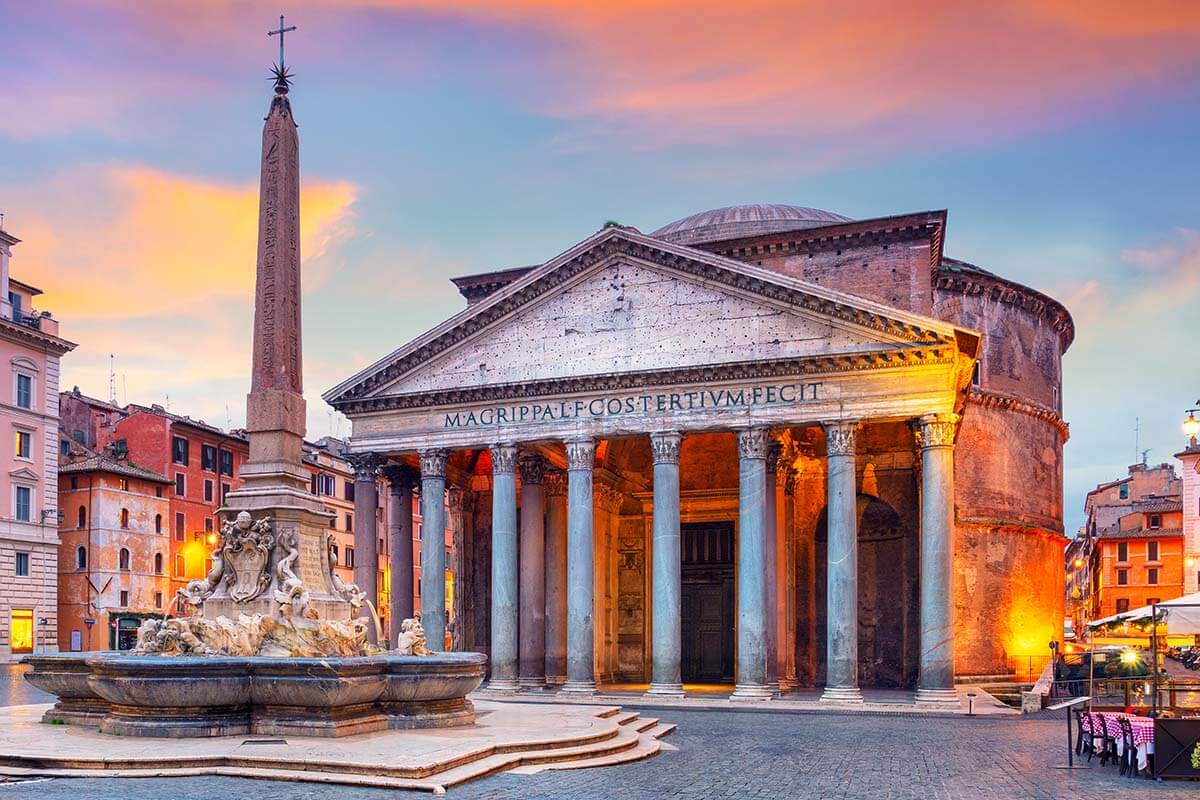
Greek and roman classical architecturestands as a testament to the enduring legacy of timeless design, embodying elegance, balance, and influence across centuries. Rooted in the rich history of ancient civilizations, this architectural style embodies a harmonious blend of form, function, and beauty that continues to captivate and inspire us today.
The Greek architectural style, characterized by its emphasis on symmetry, precision, and columns, represents an era of unparalleled innovation and cultural refinement. The iconic Doric, Ionic, and Corinthian columns, each with its distinct features, exemplify the mastery of proportions and aesthetics. On the other hand, Roman architecture, while deeply influenced by Greek principles, evolved to incorporate grandeur, engineering prowess, and monumental structures like arches, domes, and aqueducts.
What Is Classical Architecture?
Classical architecture, a term that evokes grandeur, harmony, and enduring elegance, finds its roots in the ancient civilizations of Greece and Rome. It's not just a collection of beautiful buildings, but a philosophy of design rooted in symmetry, proportion, and the use of classical orders. These principles have transcended time and place, influencing countless architectural movements throughout history.
Origins And Key Characteristics
- Ancient Greece (5th century BCE) -The birthplace of classical architecture, Greek temples embodied order and mathematical precision. Think of the Parthenon, with its majestic Doric columns and harmonious proportions.
- Ancient Rome (3rd century BCE) -Romans borrowed heavily from the Greeks but added their own flair, emphasizing arches, vaults, and domes. The Pantheon, with its awe-inspiring dome, stands as a testament to Roman engineering prowess.
Overarching Principles
- Symmetry -Classical buildings are balanced and harmonious, with elements mirroring each other on either side. Imagine a grand palace, its facade perfectly symmetrical, radiating a sense of order and stability.
- Proportion -Every element, from columns to windows, is meticulously sized in relation to the whole. This creates a sense of visual coherence and prevents any one element from dominating the composition.
- Classical Orders -These are standardized systems of columns, capitals, and entablatures that define the look and feel of a building. The three main orders are Doric (sturdy and simple), Ionic (graceful and elegant), and Corinthian (ornate and decorative).
Influence Across Periods
The impact of classical architecture is undeniable. It has been reinterpreted and reimagined throughout history, giving rise to styles like:
- Renaissance (15th-16th centuries) -A revival of classical ideals, evident in buildings like the Palazzo Medici Riccardi in Florence.
- Neoclassicism (18th-19th centuries) -A more literal interpretation of classical forms, seen in the White House and Thomas Jefferson's Monticello.
- Art Deco (1920s-1940s) -A modern take on classical elements, characterized by sleek lines and geometric shapes.
Greek And Roman Pillars
These two ancient styles are the bedrock of classical architecture. Greek temples, with their emphasis on columns and horizontal lines, exude a sense of strength and serenity. Roman architecture, with its arches and domes, is more dynamic and expressive. Together, they form a rich vocabulary that has inspired countless architects and continues to shape the built environment even today.
Setting The Stage
Now that we have a broader understanding of classical architecture, we can delve deeper into the specifics of Greek and Roman styles. Their individual nuances and contributions will be explored in the next part, revealing the unique character of each architectural tradition and its lasting impact on the world of design.
Origins And Evolution Of Greek Classical Architecture
Greek classical architecture, a symphony of harmony, proportion, and divine beauty, wasn't born overnight. It evolved over centuries, reflecting the changing political, social, and religious landscape of ancient Greece.
Historical Backdrop
- Geometric Period (900-700 BCE) -Laying the foundation with simple geometric patterns and architectural innovations in wood and mudbrick.
- Archaic Period (700-480 BCE) -The emergence of stone temple construction, marked by the development of the iconic Doric order.
- Classical Period (480-323 BCE) -The golden age, with the Parthenon as its crowning jewel. Refinement of the Doric, Ionic, and Corinthian orders.
- Hellenistic Period (323-31 BCE) -Characterized by greater spatial complexity, larger-scale projects, and the increasing use of the Corinthian order.
Architectural Elements
- Column designs -The three main orders - Doric (sturdy, fluted columns), Ionic (graceful, spiral fluting), and Corinthian (ornate, acanthus leaf capitals) - defined the visual vocabulary of temples.
- Friezes -Decorated bands running along the entablature, often depicting religious or mythological scenes. Reflecting Greek values of storytelling and the importance of their gods.
- Pediments -Triangular gables above the colonnade, typically filled with sculptural figures. Showcasing artistic prowess and illustrating myths and legends.
Cultural Values And Aesthetics
- Harmony and Proportion -Greeks saw beauty in mathematical precision and balanced forms, reflecting their belief in order and rationality.
- Civic Pride -Temples, the center of religious life, embodied the shared values and achievements of the polis (city-state).
- Human Scale -Columns and proportions were designed to relate to the human body, fostering a sense of connection and intimacy with the architecture.
- Divine Beauty -The intricate ornamentation and attention to detail were seen as a way to honor the gods and create a space worthy of their presence.
Defining Features Of Roman Classical Architecture
While Grecian temples stand as monuments to harmony and proportion, Roman architecture boasts a different kind of grandeur. It's a story of innovation, pragmatism, and sheer ambition, where arches, domes, and concrete become the instruments of architectural might.
Distinctive Characteristics
Arches and Vaults - The Romans mastered the arch, allowing them to create vast, open spaces unsupported by internal columns. Think of the Colosseum, where tiers of arches rise majestically.
Domes - The Pantheon, with its awe-inspiring concrete dome, stands as a testament to Roman engineering genius. This innovation allowed for covering large spaces with a single element.
Concrete - Romans revolutionized construction with opus caementicium, a type of concrete. This versatile material allowed for rapid construction and complex shapes, unlike the stone-heavy Greek approach.
Roman Innovations Vs. Greek Practices
Internal Space - While Greek temples focused on the exterior, Romans emphasized grand, functional interiors like baths and basilicas.
Urban Planning - Romans excelled in city planning, with grids, aqueducts, and forums, shaping public life in a way unseen in Greece.
Decorative Elements - Romans adopted Greek orders but added their own flair, like the Tuscan order (simpler than Doric) and the Composite order (blending Ionic and Corinthian).
Practicality And Engineering Prowess
Roman architecture wasn't just about aesthetics; it was about functionality anddurability. Buildings like aqueducts and bridges served practical purposes, showcasing their engineering expertise. Additionally, their use of concrete allowed for faster construction and sturdier structures, perfect for their vast empire.
A Legacy Of Innovation
Roman architecture's impact is undeniable. It shaped styles like Byzantine and Renaissance, and its engineering principles continue to influence modern construction. From the soaring arches of bridges to the grand domes of stadiums, Roman architectural echoes resonate throughout history.
Architectural Orders In Greek And Roman Design
In the world of Greek and Roman design, classical orders weren't just decorative flourishes; they were the very language of architecture. These standardized systems of columns, capitals, and entablatures defined the character and purpose of a building, each boasting unique features and reflecting the distinct sensibilities of their originators.
The Three Pillars Of Beauty
- Corinthian -The opulent king of the orders, Corinthian dazzles with its intricate acanthus leaf capitals. Imagine the Temple of Olympian Zeus, its columns crowned with a symphony of foliage, exuding luxury and grandeur.
- Ionic -Graceful and elegant, the Ionic order adds a touch of femininity to the architectural scene. Picture the Erechtheion, where slender columns adorned with delicate scrolls dance beneath the entablature.
- Doric -Born in Greece, the Doric order embodies strength and simplicity. Imagine the Parthenon, with its fluted columns rising directly from the base, a testament to power without excess.
Roman Adaptations
The Romans, ever the innovators, borrowed these orders but added their own twist.
- Taller Proportions -Roman columns soared to new heights, emphasizing monumentality and power.
- Composite Order -A playful blend of Ionic and Corinthian elements, reflecting Roman love for decorative flourish.
- Tuscan Order -A simplified Doric variation, showcasing Roman pragmatism and efficiency.
Visualization In Action
- Temple of Zeus -Imagine the imposing Doric columns, standing strong like soldiers, framing the grand statue of the king of gods
- Temple of Athena Nike -Picture the delicate Ionic columns, their scrolls mimicking unfolding petals, adding a touch of femininity to the Athenian skyline.
- Pantheon -Witness the Corinthian columns, their capitals bursting with life, supporting the majestic concrete dome, a testament to Roman engineering prowess.
Beyond Visuals
- Each order carried symbolic meaning. Doric represented masculine strength, Ionic feminine grace, and Corinthian opulence and wealth. Choosing the right order wasn't just about aesthetics; it was about communicating the purpose and essence of the building.
- This glimpse into the world of architectural orders is just the beginning. In the next part, we can delve deeper into the construction techniques, the evolution of each order, and how these timeless designs continue to inspire architects even today. Remember, these orders are not mere decorations; they are the voices of ancient civilizations, whispering their stories through stone and time.
Materials And Construction Techniques
For Greek and Roman architects, crafting architectural marvels wasn't just about artistic vision; it was a masterclass in material science and construction prowess. Their ingenious use of readily available materials, coupled with innovative techniques, resulted in structures that have defied time, whispering their stories across millennia.
Material Matters
- Stone -The undisputed champion of both civilizations, stone provided strength, beauty, and permanence.
- Greece -White marble from Mount Pentelikon graced the Parthenon, its pristine surface reflecting the Aegean sun. Limestone and sandstone were also employed for temples and other public buildings. Timber from fir, cedar, and cypress trees provided structural support and decorative accents.
- Rome -Volcanic tufa, abundant near Rome, served as a readily available building block. Travertine, a creamy white limestone, offered elegance and durability, adorning the Colosseum and Pantheon. Oak, pine, and other sturdy woods were used for roofs, doors, and furniture.
- Wood -A versatile partner, wood played a crucial role in scaffolding, roofing, and interior elements.
Other Materials
- Bricks -Sun-dried or fired bricks offered a lightweight and readily available alternative, particularly in Roman construction.
- Metals -Bronze and iron were used for tools, clamps, and decorative elements.
Processing Power
Master stonemasons employed a range of tools:
- Chisels and hammers -Shaped and carved stone blocks with precision.
- Saws -Cut wood and stone for specific dimensions.
- Levers and rollers -Moved massive blocks into place.
Construction Techniques
- Post-and-Lintel -The classical workhorse, this method relied on vertical posts supporting horizontal beams (lintels).
- Greek temples -Doric columns, essentially giant stone posts, held up the roof with incredible stability.
- Limitations -Spanning large distances was challenging, restricting interior spaces.
- Arch and Vault Construction -A game-changer! Curved arches and vaults distributed weight efficiently, allowing for vast, open spaces.
- Roman marvels -The Colosseum's arches allowed for tiered seating, and the Pantheon's dome covered a breathtaking space without internal support.
- Revolution -This technique enabled the construction of public baths, basilicas, and aqueducts, shaping Roman society and urban planning.
Longevity Legends
The combined might of materials and techniques contributed to the remarkable longevity of these structures:
- Stone's resilience -Withstood weathering and erosion for centuries.
- Precise engineering -Structures were designed to bear weight and withstand earthquakes.
- High-quality construction -Tightly fitted stones and meticulous craftsmanship minimized structural weaknesses.
Beyond Bricks And Mortar
The legacy of these materials and techniques transcends mere buildings. They shaped civilizations, fostered artistic expression, and continue to inspire architects and engineers even today.
The Parthenon's graceful columns and the Pantheon's soaring dome stand as testaments to the enduring power of human ingenuity and the boundless possibilities that lie within a piece of stone, a skilled hand, and a daring vision.
Influence Of Religion And Society On Architecture
Architecture in the ancient world wasn't merely about bricks and mortar; it was a canvas upon which societies projected their deepest beliefs and social structures. From the majestic temples of Greece to the powerful public buildings of Rome, every arch and column whispered tales of religion, power, and civic pride.
Greek Gods And Olympian Homes
Greek religion revolved around a pantheon of powerful deities, and their temples served as earthly dwellings for these divine residents.
- The Parthenon -A prime example, dedicated to Athena, goddess of wisdom and war. Its Doric columns stood strong like celestial guardians, while friezes depicted mythical battles and religious ceremonies.
- Temple of Hephaestus -This Doric temple, dedicated to the god of fire and metalworking, showcased the importance of craftsmanship in Greek society.
Beyond religious functions, temples served as civic centers, hosting festivals, political assemblies, and even athletic competitions. Their design reflected the Greeks' belief in order, proportion, and the harmonious connection between humans and the divine.
Roman Majesty And Monumental Might
The Roman Empire, built on conquest and civic duty, used architecture to proclaim its power and grandeur.
- The Colosseum -This elliptical amphitheater, a testament to Roman engineering prowess, hosted gladiatorial games and public spectacles, reflecting their love of entertainment and public displays of dominance.
- The Pantheon -A temple dedicated to all gods, its soaring concrete dome symbolized the vastness of the Roman world and the unifying power of their religion.
Roman public buildings like baths, basilicas, and aqueducts served practical purposes while showcasing the empire's technological advancement and commitment to the well-being of its citizens. Their architecture exuded a sense of order, efficiency, and the unwavering strength of the Roman state.
Power In Stone And Symbol
Both Greek and Roman architecture used specific elements to express power and civic pride:
- Column heights -Taller columns in Roman buildings signified their greater imperial reach compared to Greece.
- Decorative elements -Richer ornamentation and intricate details on Roman structures displayed their wealth and artistic prowess.
- Symmetrical layouts -Both cultures used symmetry to convey order, stability, and the harmonious relationship between the individual and the state.
Famous Greek And Roman Architectural Landmarks
From Greece's sun-drenched temples to Rome's awe-inspiring monuments, both civilizations left indelible marks on the landscape of architectural history. Their iconic landmarks not only stand as testaments to their engineering prowess and artistic genius, but also offer invaluable insights into their cultural values, religious beliefs, and political structures.
Greek Majesty
1. The Parthenon, Athens (447-438 BCE)
- Historical Context -Dedicated to Athena, goddess of wisdom and war, the Parthenon symbolized the zenith of Athenian democracy and artistic achievement during the Golden Age.
- Architectural Details -Built of Pentelic marble, the Doric temple features fluted columns, intricate friezes depicting mythological scenes, and a harmonious sense of proportion.
- Significance -Considered the epitome of Doric architecture, the Parthenon embodies Greek ideals of beauty, order, and civic pride. Its enduring influence is evident in countless neoclassical buildings throughout history.
2. Temple of Olympian Zeus, Athens (515 BCE - 2nd century AD)
- Historical Context -This colossaltemple of olympian zeus, athens, dedicated to the king of the gods, took centuries to complete and serves as a reminder of the vast ambitions of the Greek world.
- Architectural Details -Featuring colossal Corinthian columns, the temple was the largest in Greece and showcased the extravagant ornamentation of late Greek architecture.
- Significance -While never fully finished, the temple's ruins reveal the impressive scale and ambition of Greek architectural aspirations.
Roman Grandeur
1. The Colosseum, Rome (70-80 AD)
- Historical Context -Constructed by the Flavian emperors, the Colosseum served as a venue for gladiatorial combats and public spectacles, reflecting Roman love of entertainment and the glorification of power.
- Architectural Details -An elliptical structure built of concrete and stone, the Colosseum features tiered seating, arches, and intricate decorative elements.
- Significance -A marvel of Roman engineering, the Colosseum exemplifies the innovative use of arches and concrete, and its influence can be seen in amphitheaters around the world.
2. The Pantheon, Rome (118-125 AD)
- Historical Context -The pantheon, rome, dedicated to all gods, the Pantheon stands as a testament to Roman religious tolerance and architectural achievement.
- Architectural Details -Featuring the world's largest unreinforced concrete dome, the Pantheon's interior boasts coffered ceilings, niches, and an oculus that admits natural light.
- Significance -A masterpiece of symmetry and proportion, the Pantheon embodies the culmination of Roman architectural ideas and continues to inspire architects with its innovative use of concrete and its harmonious design.
Greek Vs. Roman Architectural Styles
Standing tall across millennia, Greek and Roman architecture continue to captivate us with their grandeur and timeless elegance. But beyond the shared legacy of classical order and beauty, lie distinct philosophies and practicalities that shaped each civilization's unique architectural approach.
Similarities
- Foundation in Classical Orders -Both cultures employed the three pillars of classical architecture – Doric, Ionic, and Corinthian – albeit with subtle variations. Greek styles favored the sturdier Doric and graceful Ionic, while Romans readily embraced the ornate Corinthian and even invented the Tuscan (a simplified Doric) and Composite (blending Ionic and Corinthian).
- Emphasis on Proportion and Harmony -Both Greek and Roman architects valued balance and mathematical precision, creating structures that exuded a sense of order and stability. Symmetry played a key role, with harmonious relationships between columns, entablatures, and overall proportions.
Differences
1. Philosophical Underpinnings
- Greek -Focused on civic engagement and celebrating humanachievements. Temples served as the center of religious and political life, reflecting the importance of the polis (city-state).
- Roman -Emphasized practicality, power, and imperial grandeur. Public buildings like baths, basilicas, and aqueducts reflected their engineering prowess and served the needs of a vast empire.
2. Structural Innovations
- Greek -Mastered post-and-lintel construction, relying on vertical columns supporting horizontal beams. While sturdy, this limited interior space and large-scale projects.
- Roman -Revolutionized architecture with the arch and vault, allowing for vast open spaces and complex structures. Concrete, a Roman invention, furthered their engineering feats, enabling faster construction and sturdier buildings.
3. Aesthetics and Ornamentation
- Greek -Preferred a simpler, more restrained aesthetic, with emphasis on clean lines, fluted columns, and sculptural friezes depicting mythological scenes.
- Roman -Embraced a richer, more decorative style, incorporating intricate capitals, mosaic floors, and lavish wall paintings.
Conclusion
In the tapestry of architectural history, the enduring legacy of Greek and Roman styles stands as a testament to human ingenuity and artistic brilliance. Throughout our exploration, we've traced the intricate details of these classical architectures, witnessing their lasting impact on the world. From the elegant simplicity of Greek temples to the grandeur of Roman engineering feats, these styles have transcended time, leaving an indelible mark on the landscapes of our civilizations.
Understanding the nuances and principles inherent in Greek and Roman architectures isn't merely an exercise in historical appreciation; it's a crucial foundation for modern architectural practice. The timeless lessons of proportion, symmetry, and structural integrity embedded in these classical styles continue to influence contemporary designs.



